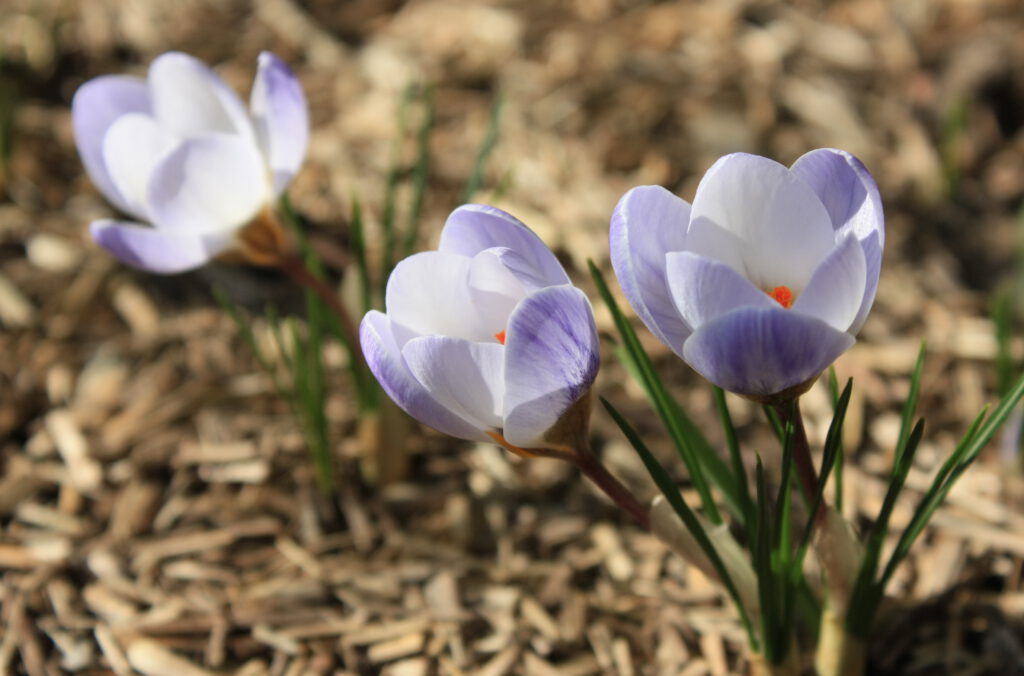Ever since I’d decided to leave research to become a garden designer, I’ve been haunted by this question: Is this the age to design gardens, or am I playing music on Titanic? I am writing this words from safety of my home in Germany at the time when Russian army is killing civilians in Kiew. I am Polish with part Ukrainian roots, so the evil suddenly became personal, and the question even more pertinent than ever.
Anthropocene
We are living in the age of men, and in the landscapes of men. Climate change, loss of biodiversity, pollution, overdrawing of resources, massive extinction of species… The native ecosystems were reduced to speckles in the flood of humans within just a few millenia, which in biological and geological time scales is an eye blink. Even if we are not somewhere physically, we affect distant lands through our activities. Microplastics are everywhere. It is projected that by 2035 we will be able to sail over the north pole in the summer. We are already reaping what we’ve sown in unpredictable and more extreme weather events. Scientists warn us we are at the flipping point. I could go on, but my goal is not to add my voice to the alarmist narration of fear, justified or not. I am merely painting the backdrop.
Another part of this backdrop are affairs of men as such. Wars and rape have been with us since the dawn of human race. Statisticians tell us we are globally improving, but it doesn’t feel this way. Even established democracies suffer from increasing societal divides and rise of fanaticism, sharpened by the global health crisis. I often reflect that this is how rational and civilised people must have felt witnessing the escalation leading to WWII. World is slipping from our hands. So is this the time to be concerned with aesthetics?
Design matters
I would argue that the need to create art and experience beauty is the signature of humanity, even more than the ability to reason. It is the bright side of our souls. But does it matter? I believe so. Take two people talking about architecture, and there are very high odds they are discussing about who they are and how they want society to function. As Robert L. Peters put it
“Design creates culture. Culture shapes values. Values determine the future.”
The space in which we are living and working permeates our souls and impacts us much deeper than we are consciously aware of. Thus architecture matters, design matters, and gardens certainly do matter.
My journey
I grew up in a post-Corbusier apartment block at the edge of Warsaw, which was certainly less dreamy than its original idea. My childhood and early adolescence overlapped two epochs: communism rule and the wild unrestricted capitalism in the first years after the transformation to independent modern-day Poland.
This weird time had certainly its advantages. For one, the city was underdeveloped. Second, it was safe. These were also the times when children did not have organised every minute of their existence, and the safety rules were rather lax. Scratches and broken limbs were taken as an unavoidable part of growing up. Thus we could roam outside as we pleased, as long as we showed up for a dinner. I recall playing among large swaths of land left to ruderal vegetation; or being lost in fields of flowers double my height; or hunting edible and ornamental treasures in remains of gardens and orchards surrounding ruined houses. I also witnessed how these treasures were sacrificed for necessity of new housing and profits. I am sure it influenced who I am now.
My parents always arranged for me long summer holidays away from the city. We spent weeks among quiet lakes and forests, or ventured to Baltic see with its beautiful shores and painfully cold water. The holiday season ended in mountains with my father, sometimes nibbling at few days of beginning of the school year. I am sure it influenced who I am now.
In the ugliness of the concrete block, we always had lots of house plants. I loved cacti, which were sunbathing happily on our south balcony. There were my favourite ferns, which inevitably perished in dry, overheated interiors, despite daily misting. Robust climbers were spreading above my bed. With my mum we always had a selection of african violets, which could be easily cultivated from a single leaf and flowered for months. There were lots of other green guests. I am sure it influenced who I am now.
Career shift
The connection to plants, and living things in general, motivated my choice to study biology. Curiosity propelled me towards scientific career. However, I have always longed for creative work and the beauty of natural world. The turning point was a travel through Poland in the summer 2019. As our car rolled through the towns, fields, and cultivated forests, I become deeply aware we are indeed living in the landscape of men and I want to take part in how it is being shaped. I also believe I have some gifts to share to make it better.
Cultivating life
Soon, the vast majority of people will live in cities. In the same way as every person throwing a small piece of litter makes up a huge pile of rubbish, our little gardens collectively take a big part of land. Therefore it matters how they are made and what grows in them. Whether they are ‘green concrete’ or beautiful refugees full of flowers and buzzing bees. Whether they fill our hearts with joy on Monday morning, or leave us indifferent. Gardens matter because they have power to change how we feel for the better, and thus how we make feel everyone around us. Gardens matter for what values our children are going to hold.
I won’t claim that gardening will stop climate change, or wars, or the plague. Nonetheless, our little gardens can make big ripples.
Here and now
One survey among Polish WWII survivors revealed that these people’s happiest period of life was during the war. Surprising, isn’t it? But this was the time when they were young, they loved, and they were living in the present tense. Thus, coming back to the question from the beginning, let me rephrase it:
Is this the time to be happy?
*



